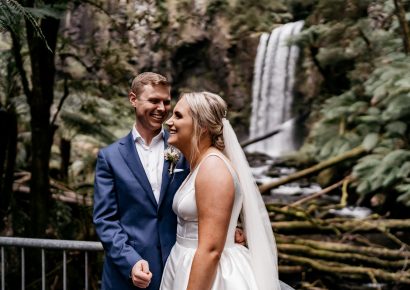Once again, Dan Andrews has taken to social media about misinformation.
After a marathon late-night sitting overnight, a law change to extend Victoria’s state of emergency has passed the state’s Upper House, clearing the way for the Victorian government to proceed with its pandemic response for up to a further six months.
The current state of emergency was set to expire on Sunday September 13, so from this date moving forward, Premier Daniel Andrews and his government are poised to have the power to continue enforcing public health protections such as mandatory face coverings and the current and past restrictions that have been put in place to slow the spread of COVID-19.
The sitting extended from Tuesday night and into Wednesday morning, as a long debate saw 20 MPs vote in favour of the bill, with 19 voting against it. In a surprise decision, Victorian Greens leader Samantha Ratnam returned from maternity leave to throw her hat in the ring, herself voting in favour of the amendments.
Others to have voted in favour of the six-month extension included Reason Party’s Fiona Patten and Animal Justice Party’s Andy Meddick. Victorian Health Minister Jenny Mikakos offered her own support of the way the sitting was conducted via Twitter.
Thankyou to all Government MPs & to @AndyMeddickMP @FionaPattenMLC & @SamanthaRatnam who put public health above politics & voted to allow a declaration of a State of Emergency to continue for another 6 months if necessary to protect Victorians from #COVID19 #springst
— Jenny Mikakos MP #StayHomeSaveLives (@JennyMikakos) September 1, 2020
Once again, Dan Andrews has had to take to social media to assure the public that this won’t mean another six months of restrictions, while also acknowledging the strong feelings people hold towards the State of Emergency legislation.
“Some people have asked whether extending the State of Emergency by six months means we also extend our current level of restrictions for that period. The answer is a clear no. That’s absolutely not the case,” he said in a post to Facebook just now.
“The State of Emergency is the legal framework that allows the Chief Health Officer to set directions to keep us all safe, and for those directions to be enforced.
“That includes the measures we’ll need to safely reopen. Precautions such as requiring workplaces to have a COVIDSafe plan, mandatory isolation for positive cases, and wearing face coverings.
“The CHO’s directions are based on the data and the health advice at any given time – and our current restrictions will change when it’s safe to do so,” he continues.
“But without the State of Emergency, everything becomes voluntary – and we essentially just have to take our chances and hope for the best.”
Without the State of Emergency, Andrews explained that people who are infectious could be out and about, with no way of ensuring they self-isolate. Workplaces couldn’t be held to any sort of standard or required to keep employees safe.
Already the State of Emergency has been extended six times, at four-week intervals. It’s just now that they’ve reached the limit of the current law.
“The only reason we sought this extension is because Victoria’s current State of Emergency has a hard cap at six months. No other state has this limit – in fact, most of their emergency laws can be extended indefinitely without parliamentary approval. Ours are the most conservative in the country – even after this change.
“If we don’t need the emergency powers, we won’t use them – but they’re available so we can respond quickly if and when we do.”
This all comes after the state government recently announced that on Sunday September 6, it would be announcing its plan to transitioning Victoria out of its current lockdown. As part of this, the government is consulting with a range of health experts, industries, unions and community organisations to develop what they are calling a ‘COVID Normal’ roadmap.
The plan aims to provide clarity and certainty for Victorians and will outline how businesses and workplaces operate across all industries post-lockdown.

